|
Surviving LCVPs Main Page
Surviving World War Two LCVPs
Surviving Post-World
War Two Wooden LCVPs Surviving Post-World War Two Fiberglass LCVPs
Replica LCVPs
Surviving
French Post-World War Two LCVPs
This page added 5-22-2021.
An American Auto
Industry in World War Two Special Edition
Below are several historic photos
of surplus American World War Two LCVPs that were sold to the French for
use in its war in Indo China starting in 1966. The boats have been
highly modified for use in riverine patrol and combat in Vietnam.
These were typically armed with one 20mm Oerlikon cannon, three .30
machine guns and two grenade launchers. They were powered by the
Gray 64HN9/Detroit Diesel 6-71 engine.
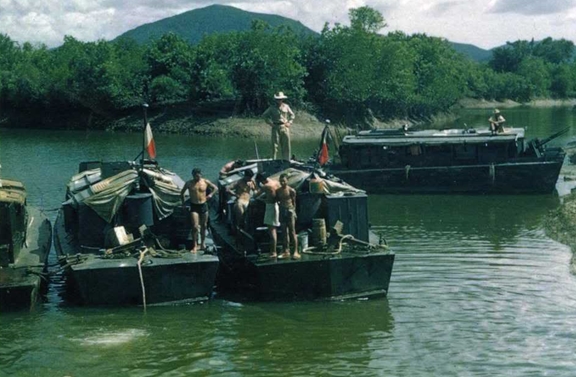
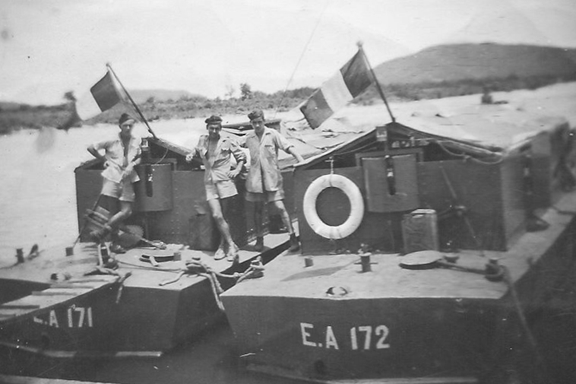
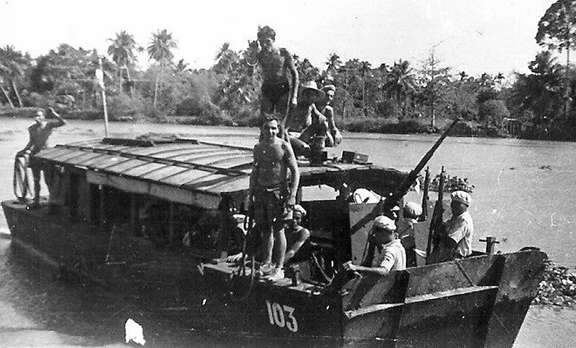
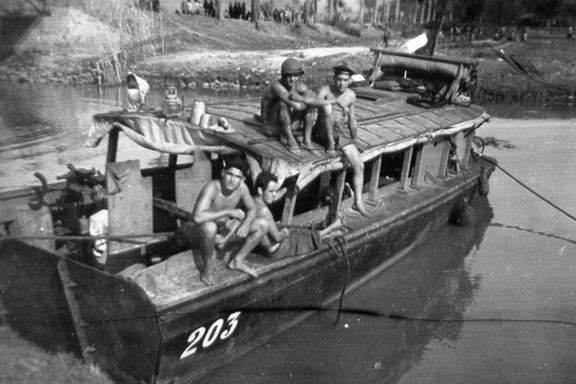
The French also built a steel version of the
LCVP that were designated EA for assault boat. Below is a photo of two steel EAs. For these the French substituted
a German MG 151 for the Oerlikon. They were powered by the same
Gray 64HN9/Detroit Diesel 6-71 engine as the original American LCVPs used
by the French.
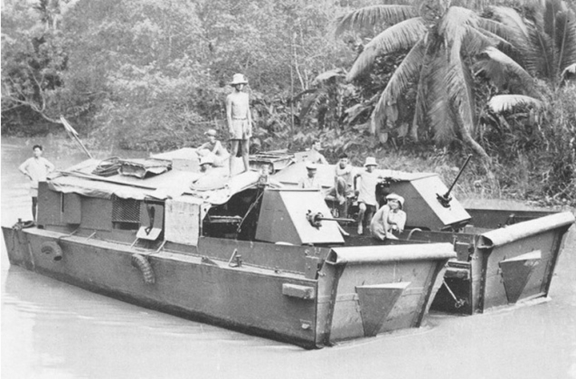
Note that the design of the ramp was
different from any of those built during World War Two.
Approximate Number of LCVP and EAs operating in Indo China from
1948 to 1953
The EA assault boat was introduced in 1950. Assuming
no more LCVPs were purchased or phased out, about 60 EAs built.
It would be interesting to find out whether these were left in
Vietnam after the French left and were used by both or either
the South or North Vietnamese military. |
| Year |
1946 |
1947 |
1948 |
1949 |
1950 |
1951 |
1952 |
1953 |
|
Number of LCVPs and EAs |
32 |
32 |
46 |
28 |
91 |
89 |
90 |
88 |
LCVPs on display in France: The
LCVPs on display and shown below have several distinct differences from
the original American-built LCVPs. One would think that with all
of the LCVPs that landed in France and then were used for river
crossings that some of the LCVPs at museums or otherwise on display
would be those that were left in the country after World War Two.
That does not seem be the case. This is what I originally assumed when learned about them.
However, after looking at the photos and being told that France built
its own, I found some differences between the originals and the ones on
display in France. Just as the French built steel EAs for
its war in Vietnam, it appears it built wooden LCVPs very similar
to what the original LCVPs built in the United States during World War
Two.
Also, there have been several organizations
that have visited France looking for authentic American-built LCVPs
built during World War Two. I would have thought these groups
would have visited the LCVPs below and made known if they were of
original World War Two vintage. Without being able to personally
visit and investigate, or have someone reveal the hull number, or other
relevant information, I am placing these a separate French category.
|
Comparison of Attributes between Original World War Two LCVPs
and French Display LCVPs |
|
Attribute |
Original LCVP |
French LCVP |
Comments |
| Ramp
Cable System |
Runs
internally and under the floor. Sheaves at the ramp are
outside the boat. |
Runs
internally and under the floor. Sheaves at the ramp are
outside the boat. |
For
this, both type boats are the same. |
| Gun
Tubs |
Yes |
Yes |
For
this, both type boats are the same. |
|
Hatches over the fuel tanks |
Yes |
Yes |
For
this, both type boats are the same. |
|
Backboards behind gun tubs |
Yes |
No |
I
have not seen any in the photos the LCVPs in France. |
| Prop
shaft, rudder and skeg mounting brackets to hull |
This
was a one or two piece casting. The propeller shaft went
through the casting that mounted to the hull and then attached
to the skeg. |
This
one has a casting that connects the propeller shaft to the hull.
There is then a V-shaped bracket that mounts the hull to the
skeg. |
The
type seen on the French LCVPs was introduced in the 1950s on
American wooden LCVPs. The design was retained for the
fiberglass LCVPs built in the 1960s. |
| Ramp
with diamond shaped reinforcement on the bottom |
The
American LCVPs had a smooth, rounded radius on them on the
diamond. |
All
of the French LCVPs have no radius and have straight edges on
the diamond. |
This
is a major difference in the two boats. If the French LCVPs
were left over from the war, the ramps would have the diamonds
with the radius. Also, there were several types of ramps
used on the American boats, and that should be reflected in a
variety of ramps on French display boats. |
|
Mooring Bitt or Cleat |
This
is a t-shaped cleat for tying off to a dock or another boat. |
These
are double cross mooring bitts. |
All
of the French boats have the double cross hardware.
Normally, when restoring an LCVP the original hardware is saved
and re-used. |
| Armor
plate |
Yes |
No |
None
of the French display LCVPs have any armor plate on them. |
|
Exterior Plywood Planking |
The
plywood planking consisted of pieces 16 inches wide. |
Large
plywood sheets are evident on the French samples. |
In
several of the outside exhibits below the large plywood pieces
are evident. |
|
Engine exhaust |
American LCVPs have the exhaust on the port side for the Gray
64HN9/ Detroit Diesel 6-71 and substitute engines. |
Mostly on the starboard side for the French V6 diesel engine. |
One
or two examples have exhausts on both sides. |
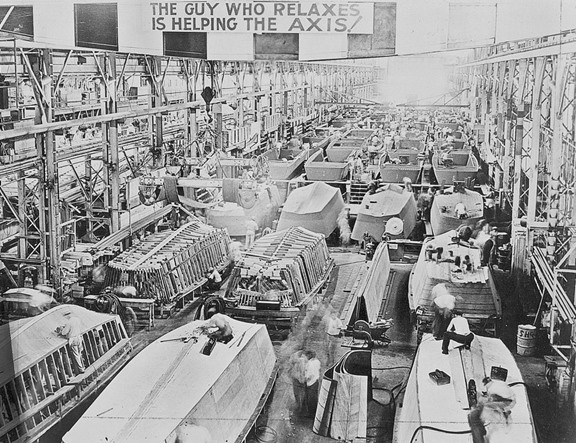
This photo of the Higgins Industries' plant
shows the length and width of the plywood planking.
Owner: Private Owner
Location: See below
Date of Photos:
Photographed at Catz
near Carentan, near to the Normandy Victory Museum,
Normandy- June 2019 by Pierre-Olivier Buan.
Comments: This LCVP on a trailer
gives the best overview of French wooden LCVPs.
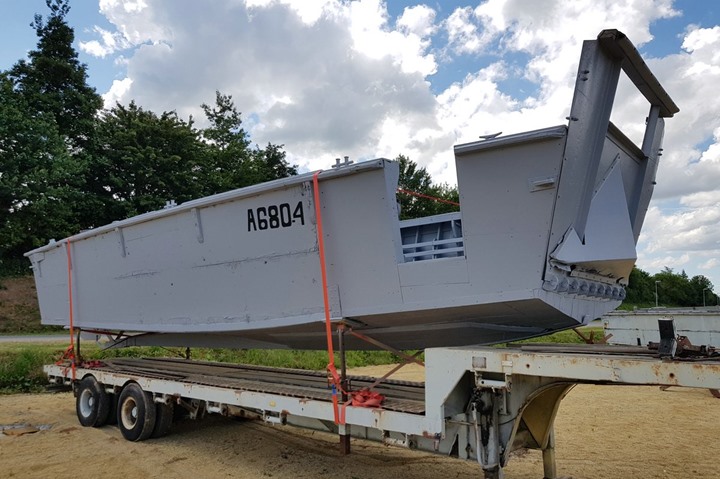
The owner has cut out a section of the hull
for visitor internal viewing. This has no armor plate, the angular
diamond shape on the ramp, and large sections of plywood siding. Photo is courtesy of Pierre-Olivier Buan.
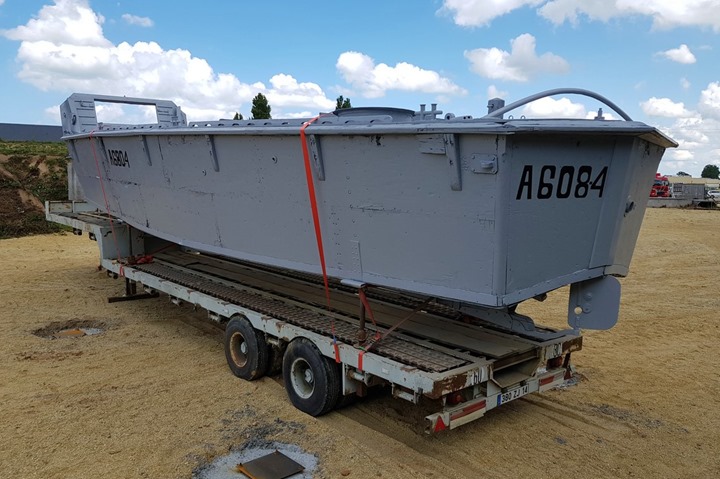
This has the curved bar on the transom
seen on several French LCVPs. Photo is courtesy of Pierre-Olivier Buan.
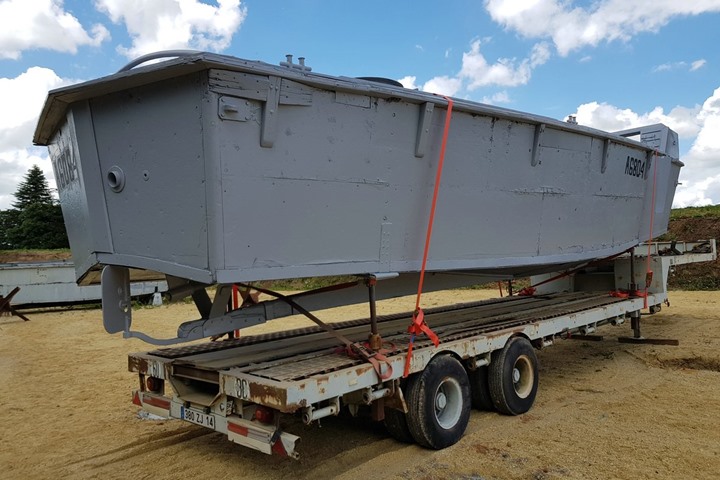
The exhaust is on the starboard side of the boat. The location of
the exterior plywood and their seams is evident. Photo is courtesy of Pierre-Olivier Buan.
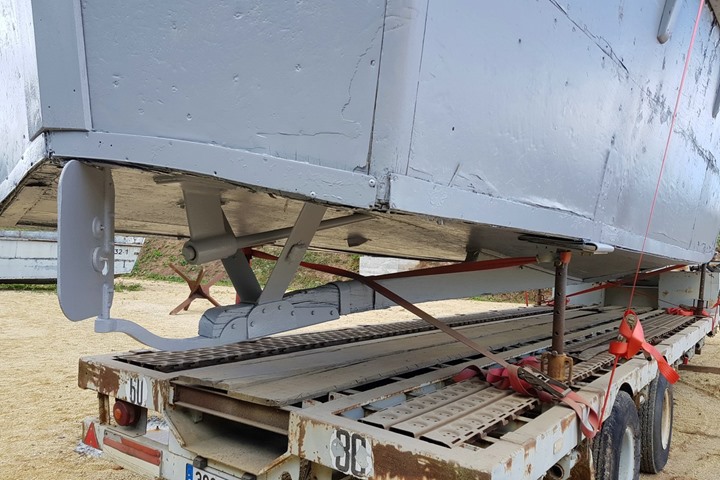
The propeller is missing but this has the
post-World War Two V-bracket that attaches the hull to the skeg.
It has a second bracket that attaches the hull to the propeller shaft. Photo is courtesy of Pierre-Olivier Buan.
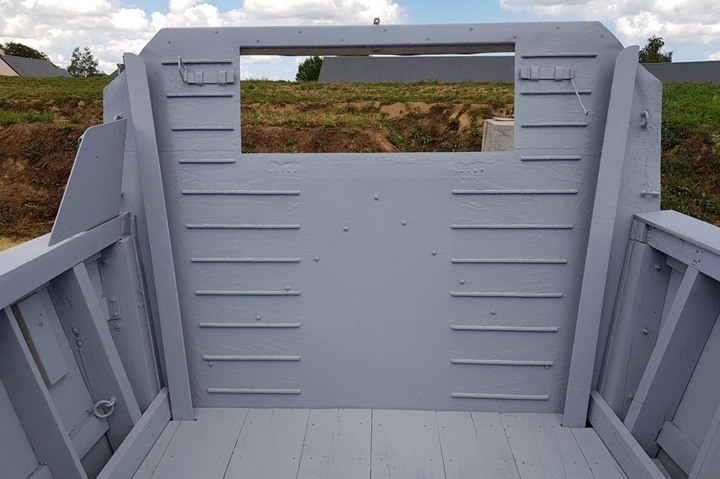
Photo is courtesy of Pierre-Olivier Buan.
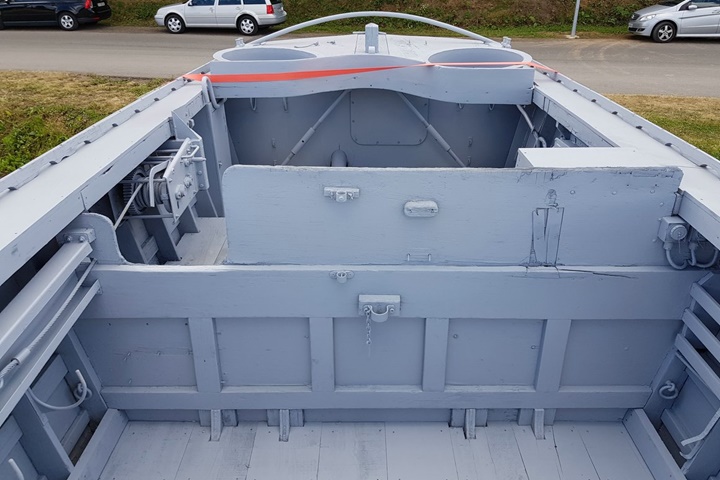
Photo is courtesy of Pierre-Olivier Buan.
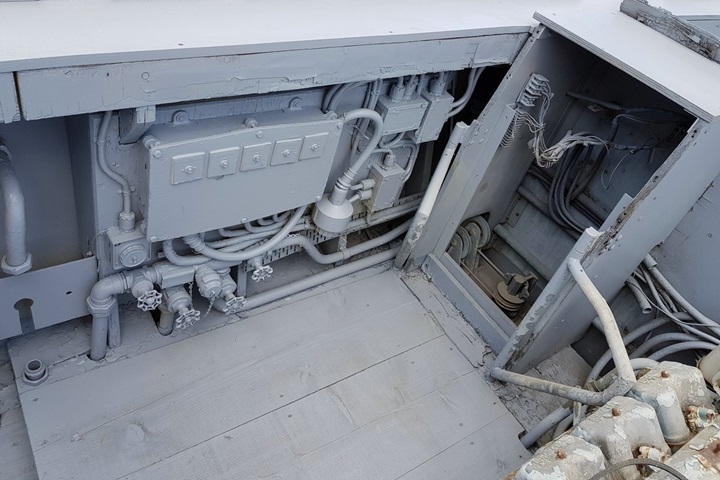
Photo is courtesy of Pierre-Olivier Buan.
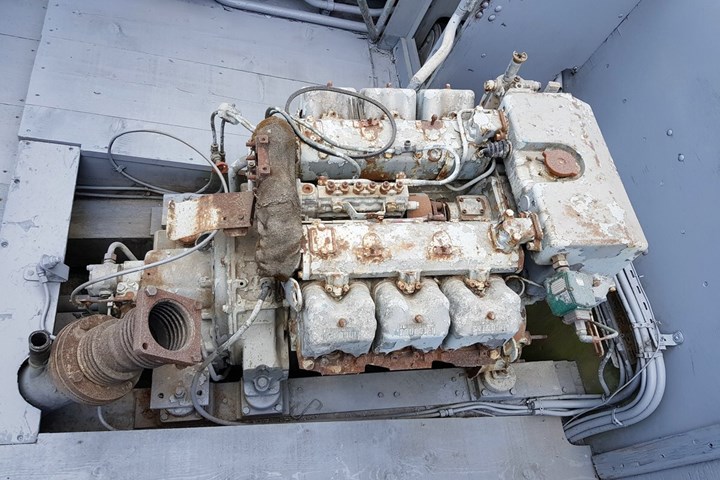
This is a French V-6 diesel engine with the
exhaust on the starboard side of the engine. Photo is courtesy of Pierre-Olivier Buan.
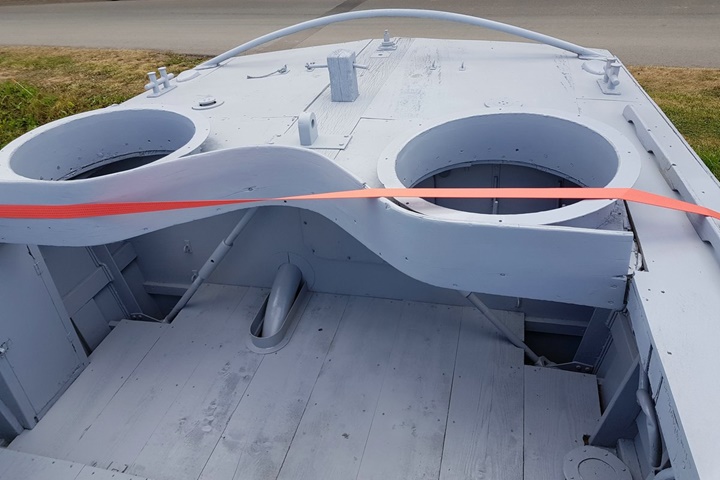
This is different than the American World
War Two LCVPs. On those there is a bulkhead at this location and
there is no curvature to it. Photo is courtesy of Pierre-Olivier Buan.
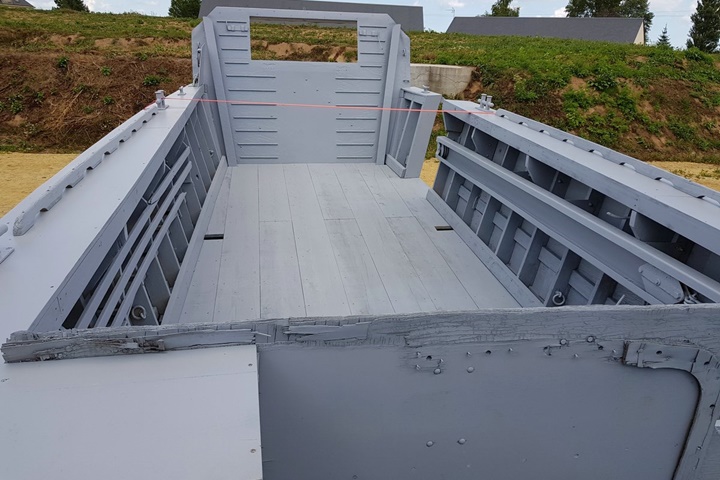
Photo is courtesy of Pierre-Olivier Buan.
Owner: Maisy Battery Museum
Location: Grand-Maisy, Normandy
Date of Photos: June 2019 by Pierre-Olivier Buan
Comments: This has been identified as being an original World
War Two LCVP after being found in a farmer's field in Normandy.
Being found in Normandy would lead one to believe it was left over from
the invasion in 1944. It does have the proper World War Two ramp
cable system and gun tubs. However, the engine has been replaced
with a French-built engine because the exhaust is on the starboard side
of the stern of the boat. The hardware on the transom is typical
of the French display boat with the double cross design rather than the
American single t-type. There is no armor on the sides of the boat and
the sides are covered with large pieces of plywood.
Several sources indicate this is a World War
Two LCVP. If so, the hull number should still be marked on one of
the ribs along the bottom of the boat near the front. A photo of
the rudder, propeller, and skeg attachments would help with the identification.
Also, knowing what the front of the ramp looks like would be helpful for
identification.
At this point, the evidence indicates that this is
a post-World War Two era French-built LCVP.
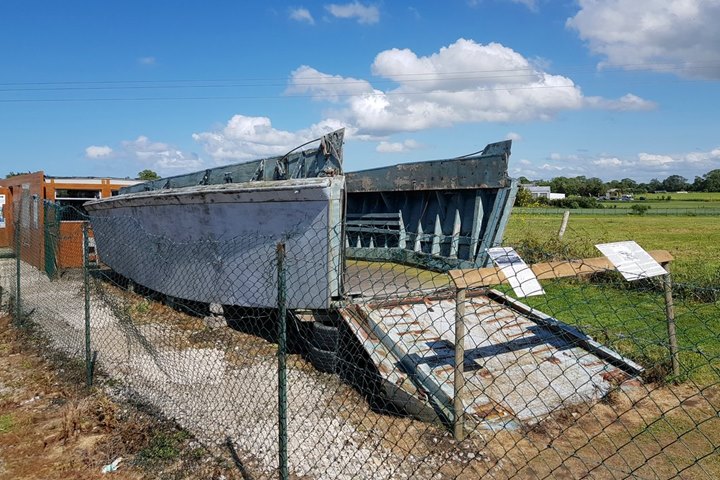
The LCVP has the World War Two ramp cable
system but has no armor. Photo is courtesy of Pierre-Olivier Buan.
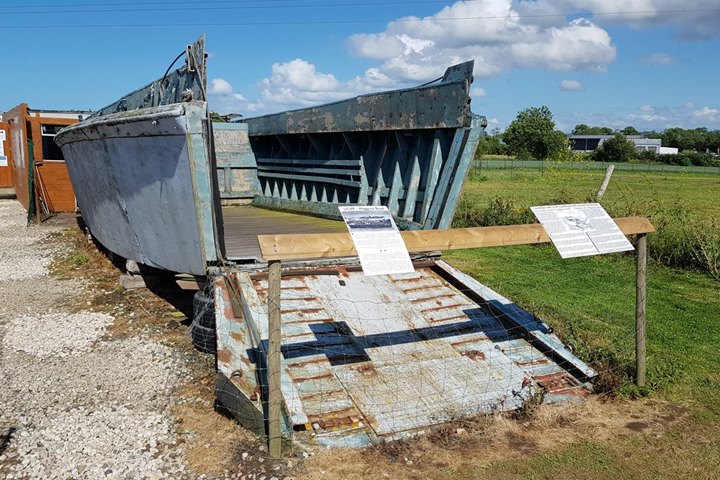
The boat has long wooden boards for
holding life jackets along the inside of the hull on the port side.
This is common in both types of LCVPs. Photo is courtesy of
Pierre-Olivier Buan.
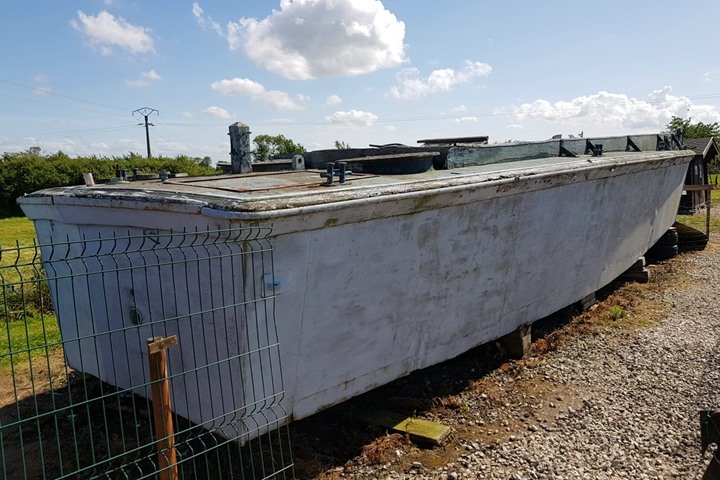
The exhaust is on the starboard side of
the stern. The original American LCVPs had the exhaust on the left
side. The seams between the large pieces of plywood are evident in
this photo. Photo is courtesy of Pierre-Olivier Buan.
Owner: Unknown
Location: St. Rapheal,
Southern France
Date of Photos:
June 2019 by Pierre-Olivier Buan
Comments: This has the straight edge diamond on the lower part
of the ramp which was not used on American LCVPs. It also has
several of the double cross type hardware pieces, no armor, and exhausts on
both sides of the stern.
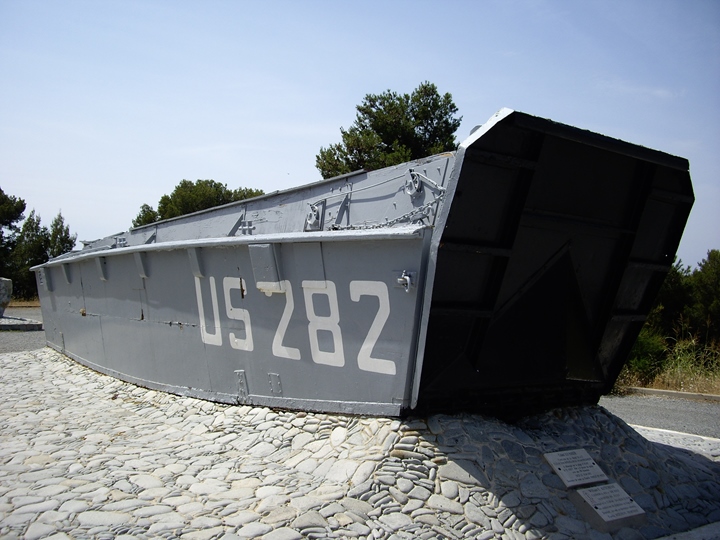
Photo is courtesy of Pierre-Olivier Buan.
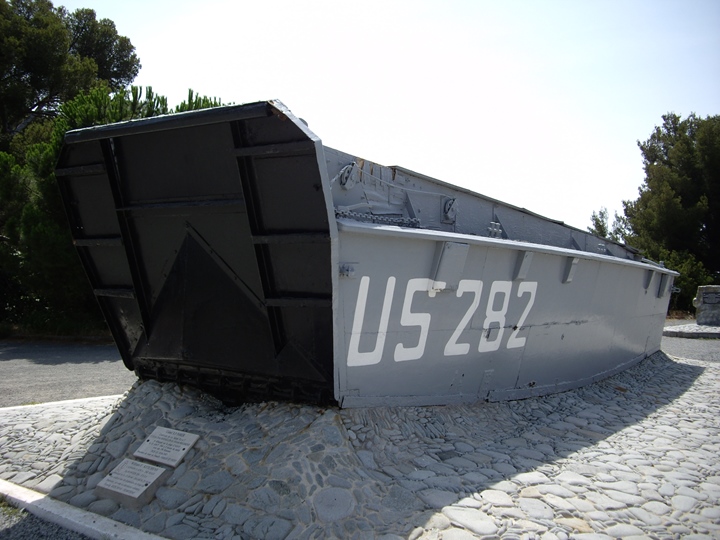
This has no armor plate and the straight
edge diamond on the ramp. Photo is courtesy of Pierre-Olivier Buan.
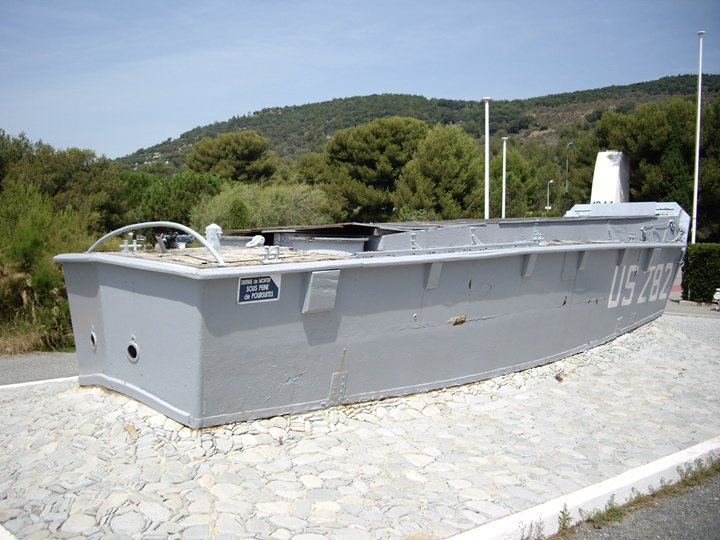
The curved bar is typical of French LCVPs
but not American boats. The
wood blocks along the side are different. Photo is courtesy of
Pierre-Olivier Buan.
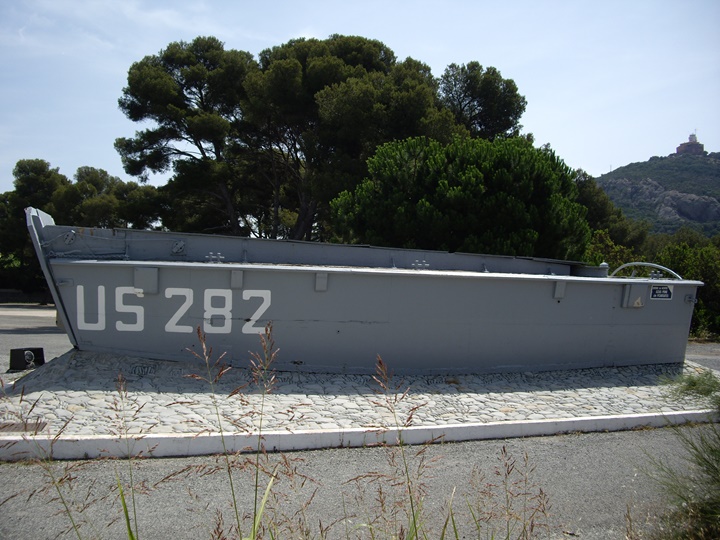
Photo is courtesy of Pierre-Olivier Buan.
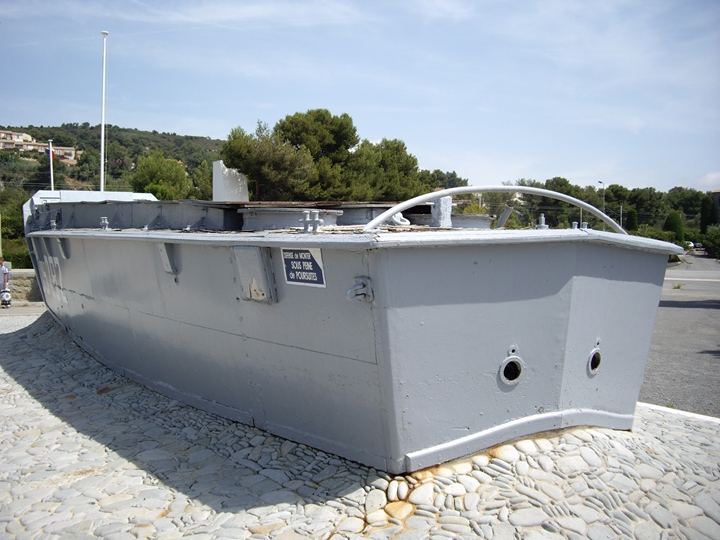
Photo is courtesy of Pierre-Olivier Buan.
Owner: Normandy Victory Museum
Location: Catz, near Carentan, Normandy
Date of Photos: June 2019 by Pierre-Olivier Buan
Comments: This is typical of the LCVPs on display in France;
with the hard edge diamond on the ramp, a World War Two ramp cable
system, and no armor plate. It is in pretty rough condition.
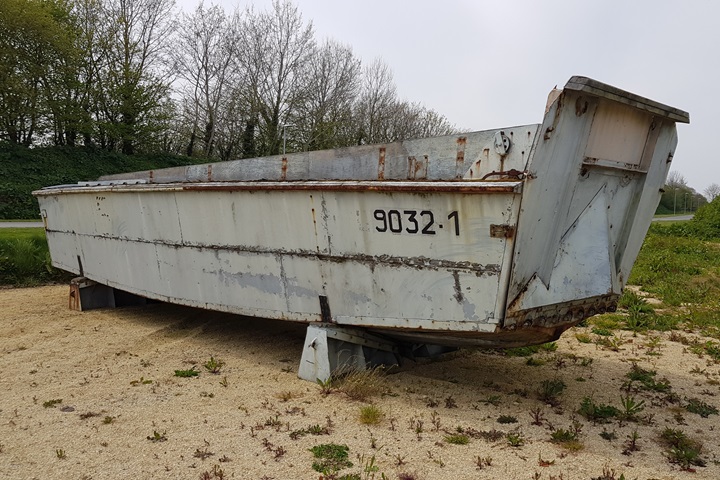
Photo is courtesy of Pierre-Olivier Buan.
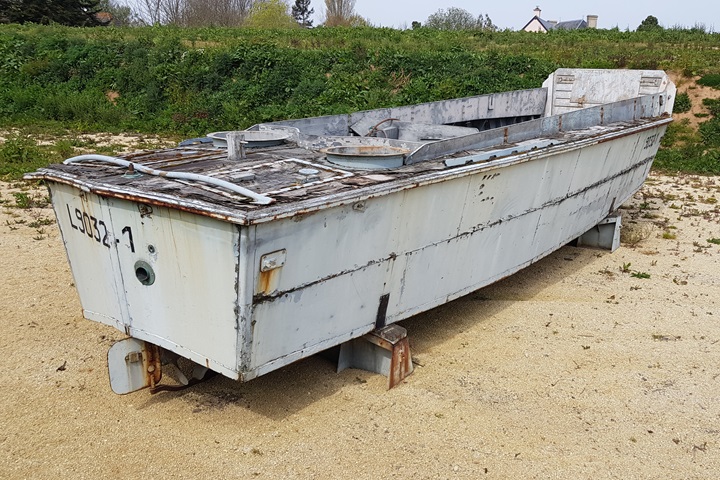
This example has a double curved bar across
the rear of the transom and the exhaust on the starboard side for a
French engine. Photo is courtesy of Pierre-Olivier Buan.
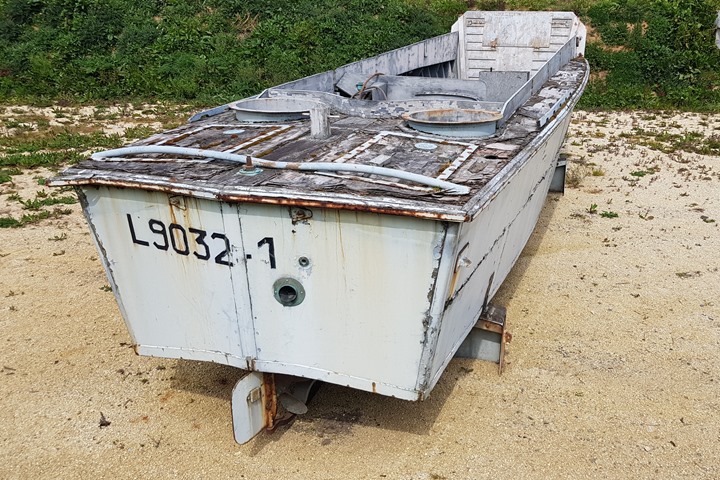
Photo is courtesy of Pierre-Olivier Buan.
Owner: Utah Beach Museum
Location: Catz, near Carentan, Normandy
Date of Photos: Unknown
Comments: The photo below does not provide enough information
as to its identity. However, a YouTube video of the Museum and the LCVP indicates it
is a French-built boat.
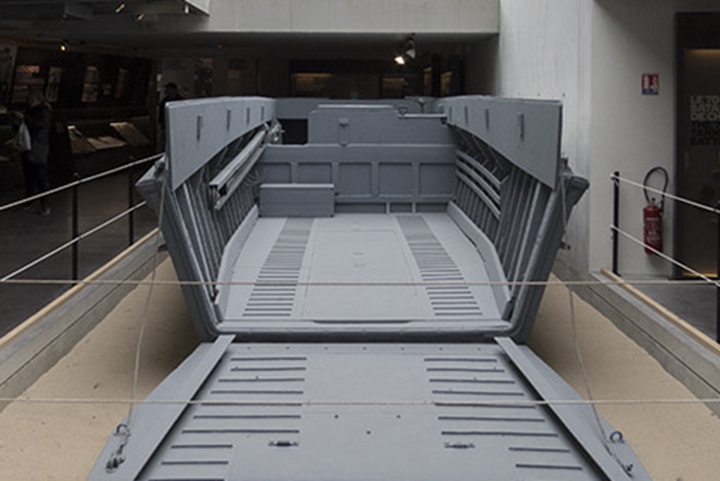
YouTube Video of the Utah Beach Museum
Owner: Omaha Beach Memorial Museum
Location: Omaha Beach, Normandy
Date of Photos: Unknown
Comments: There is a lack of information to make a judgment on
this display LCVP.
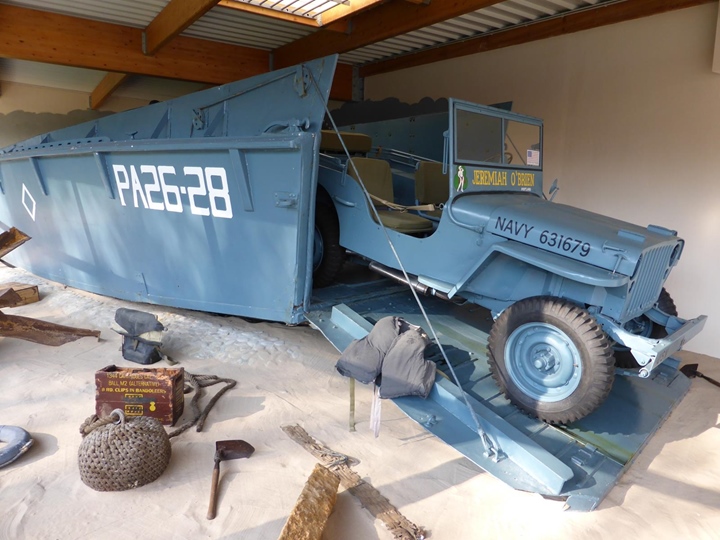
Photo courtesy of the Omaha Beach Memorial Museum.
Owner: DDay Omaha Museum
Location: Vierville-sur-Mer, Normandy
Date of Photos: June 2019 by Pierre-Olivier Buan
Comments: This is a fenced area and only the two photos could
be taken.
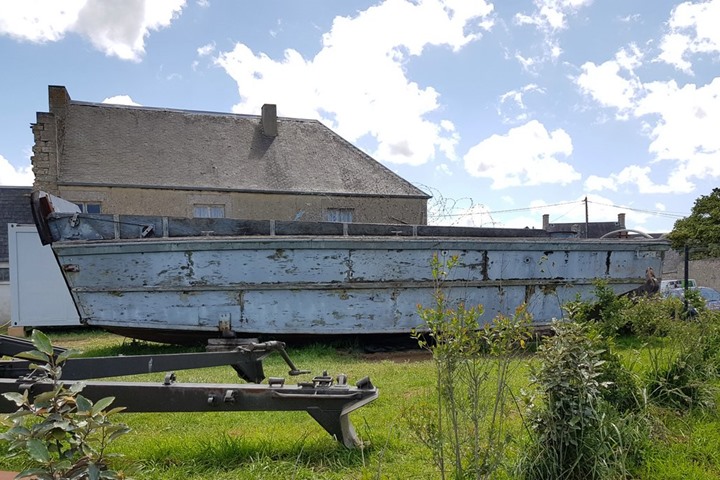
Photo is courtesy
of Pierre-Olivier Buan.
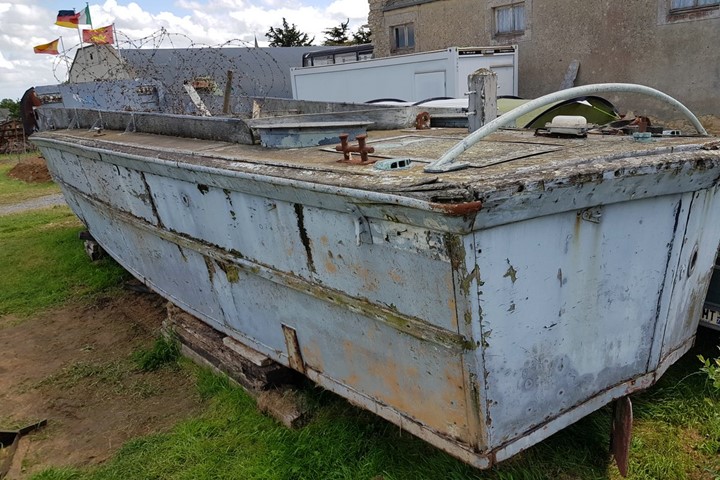
This particular boat has the curved bar
across the transom, the exhaust on the starboard side, and the double
cross mooring cleats. Photo is courtesy of Pierre-Olivier Buan.
Owner: Jeep D-Day 44 Stop
Location: Vierville-sur-Mer,
Normandy
Date of Photos: June 2019 by Pierre-Olivier Buan
Comments: This has seen better days.
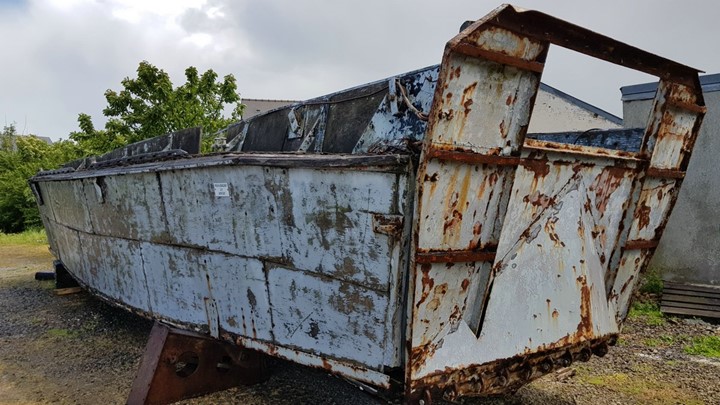
Photo is courtesy of Pierre-Olivier Buan.
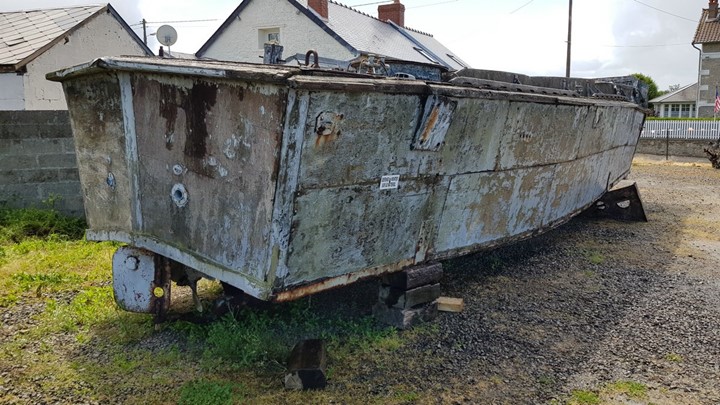
Photo is courtesy of Pierre-Olivier Buan.
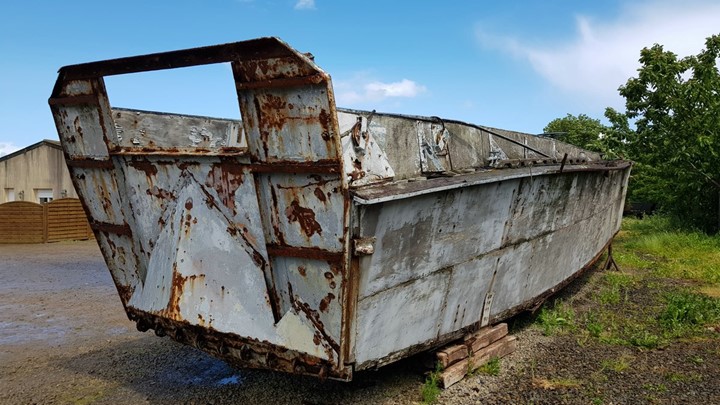
Photo is courtesy of Pierre-Olivier Buan.
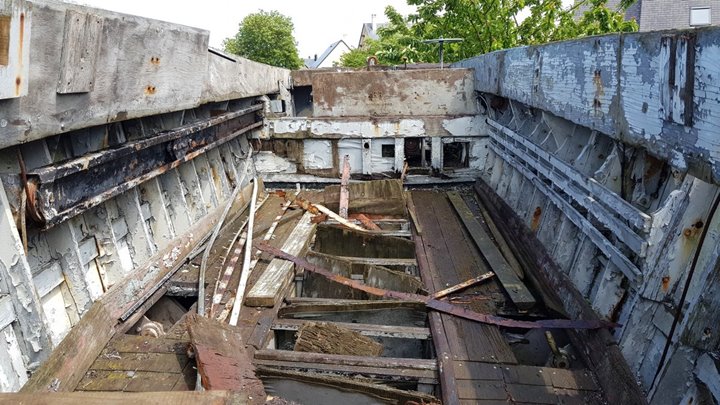
Photo is courtesy of Pierre-Olivier Buan.
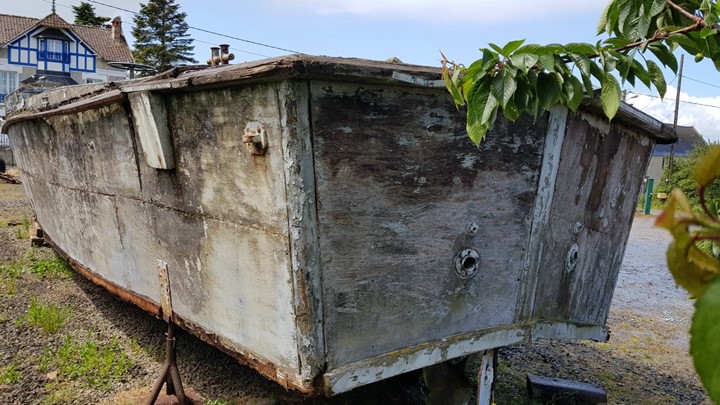
Photo is courtesy of Pierre-Olivier Buan.
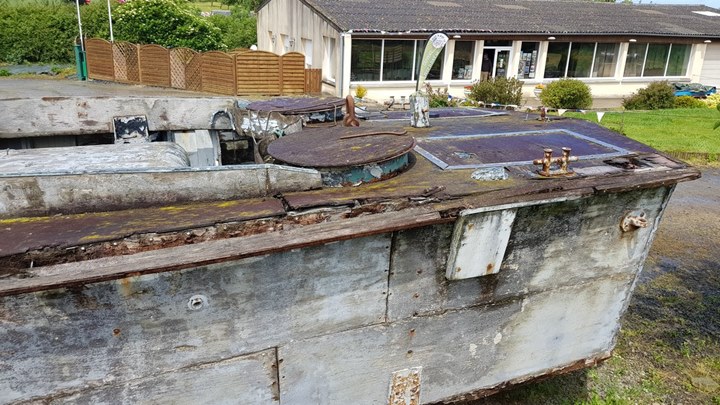
Photo is courtesy of Pierre-Olivier Buan.
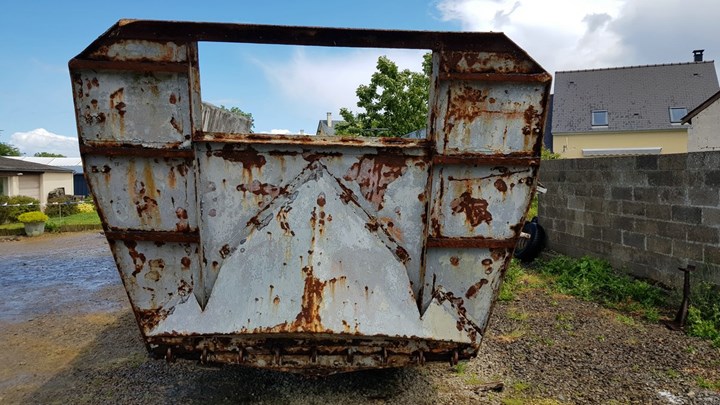
Photo is courtesy of Pierre-Olivier Buan.
Owner: Overlord Museum
Location: Coleville,
Normandy
Date of Photos: Unknown
Comments: There is limited information in the two photos below
to determine the origin of the LCVP.
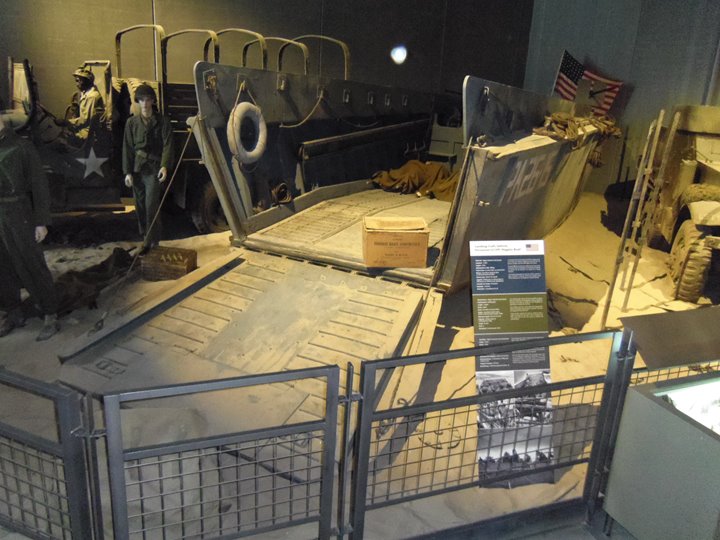
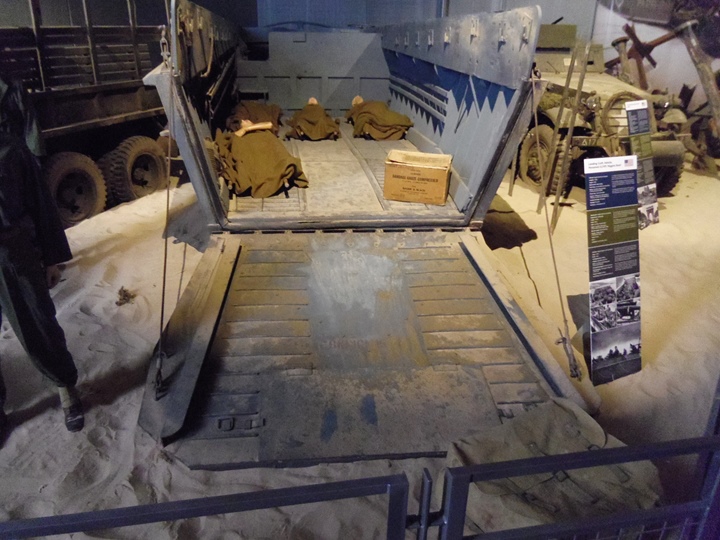
Owner: South Pacific WWII Museum
Location: Luganville, Espiritu Santo, Vanuatu
Date of Photos: 2015
Comments: This is the most interesting of the French LCVPs.
It is now being restored for display at this museum on this small
South Pacific island in the Coral Sea. It arrived there in
2015. When I first looked at the photos, I knew right away it was
from France. It just pops out at you once you look at several of
these LCVPs. The markings on it are similar to the French LCVP at
the Normandy Victory Museum. Even more interestingly, the museum website
describes this as a replica of the original U.S. Navy LCVPs. This
statement adds credence to the fact that the French display LCVPs are of
post-World War Two origin.
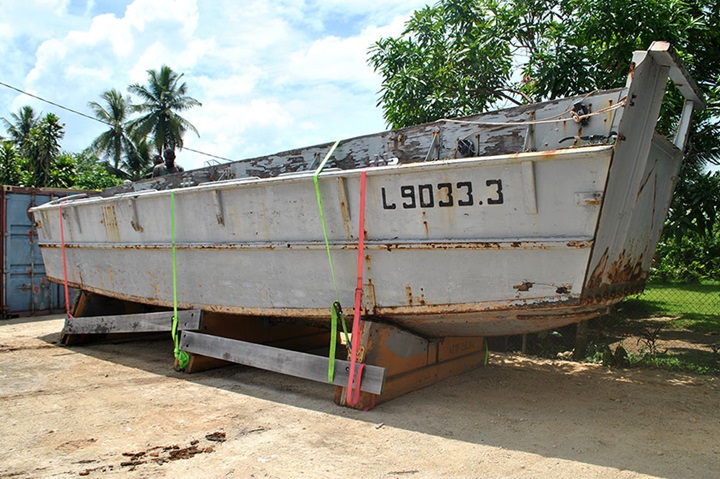
The ramp at one time had the hard edged
diamond attached to it. Photo courtesy of the South Pacific WWII
Museum.
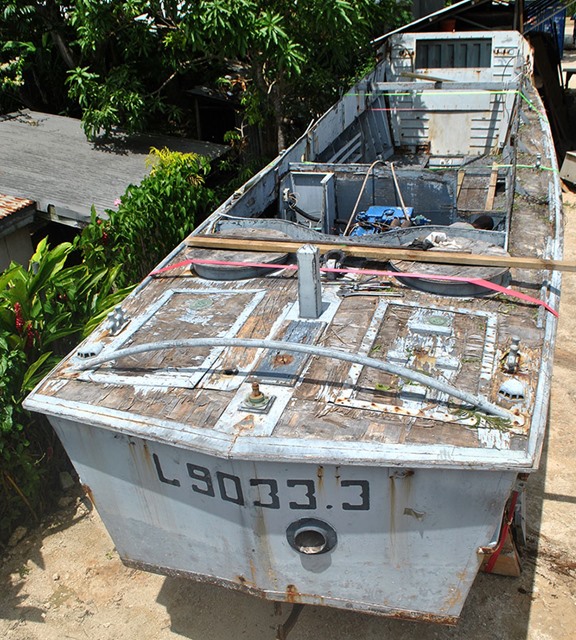
Photo courtesy of the South Pacific WWII
Museum.
Owner: Musee Maritime de Nouvelle-Caledonie
Location: Noumea, New Caledonia
Date of Photos: Unknown date courtesy of Christophe Thomas
Comments: This is another very interesting French-built LCVP
and another located in French territory in the South Pacific. It came
to the museum in New Caledonia about the same time as the one above in Luganville, Espiritu Santo, Vanuatu.
Both have the same markings on them with the exception of a period
before the last number "3."
I was informed by Mr. Christophe Thomas of
this landing craft in May 2021. I was totally unaware of it
existence until he advised me of it. This was just another case of
not knowing what I don't know. Thank you to Mr. Thomas for the
photos and information.
Information and photos added 5-22-2021.
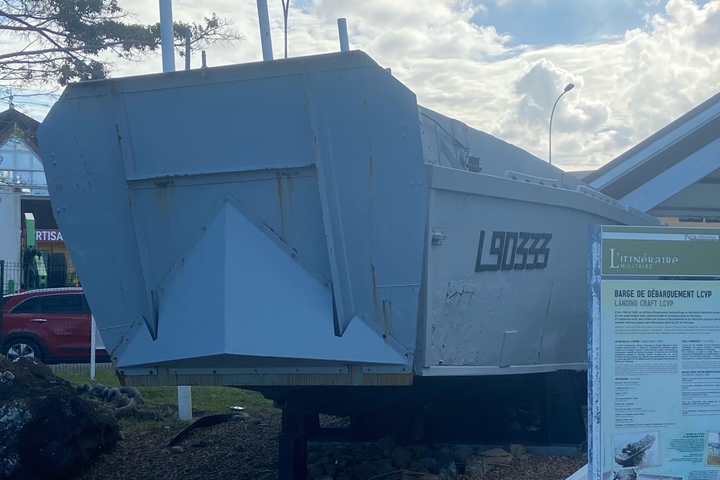
Photo courtesy of Christophe Thomas.
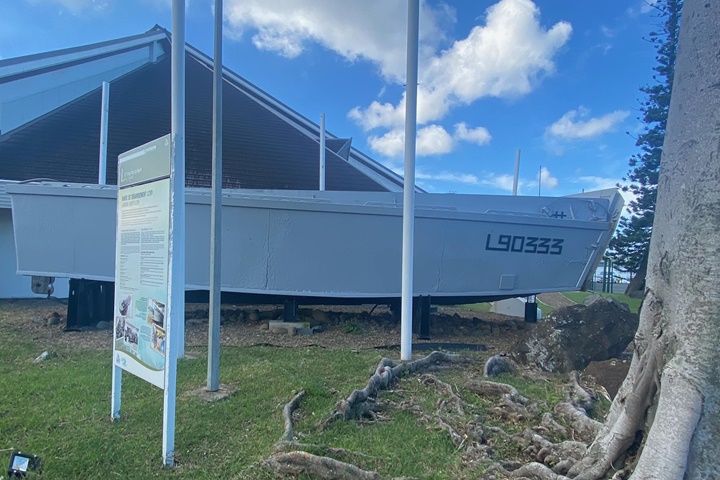
Photo courtesy of Christophe Thomas.
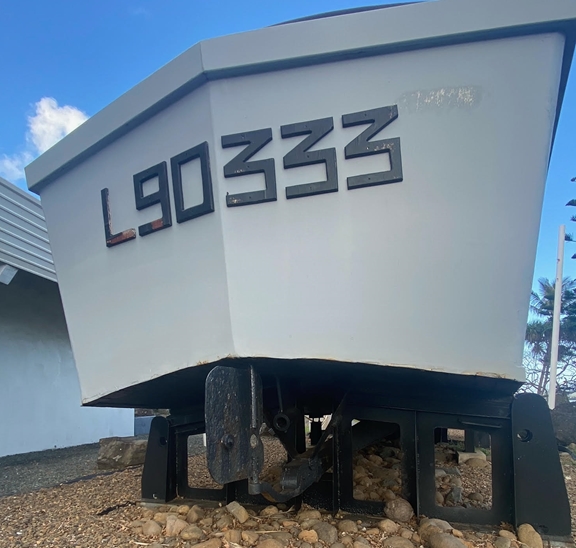
Photo courtesy of Christophe Thomas.
|












































